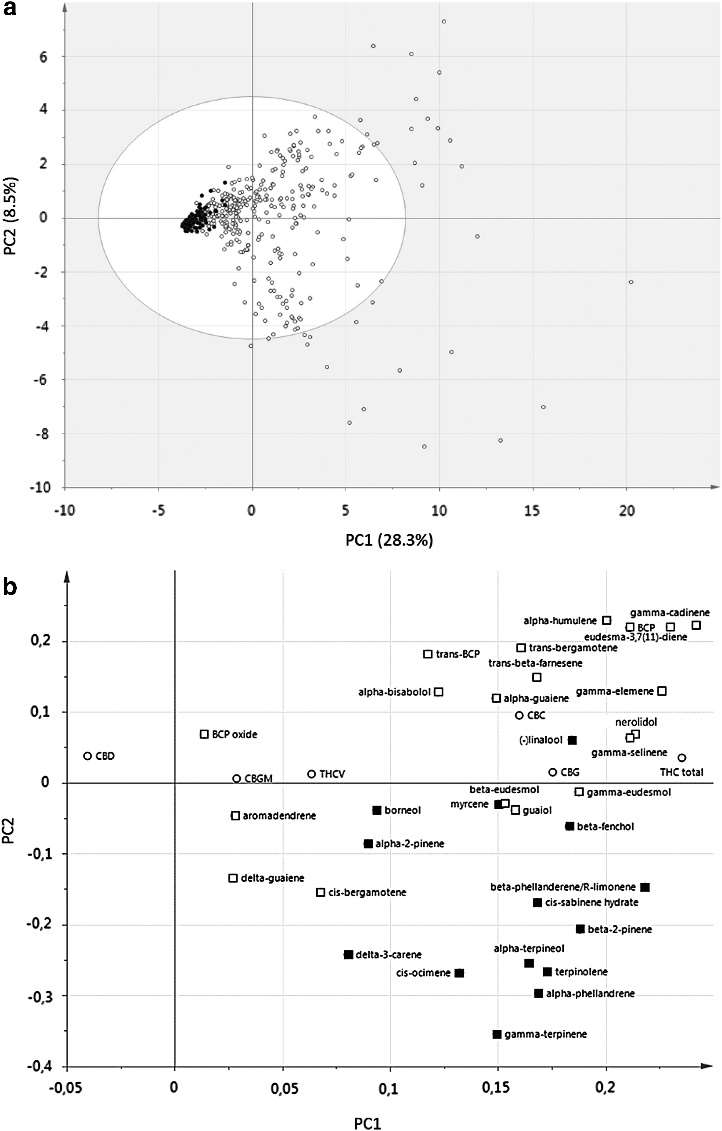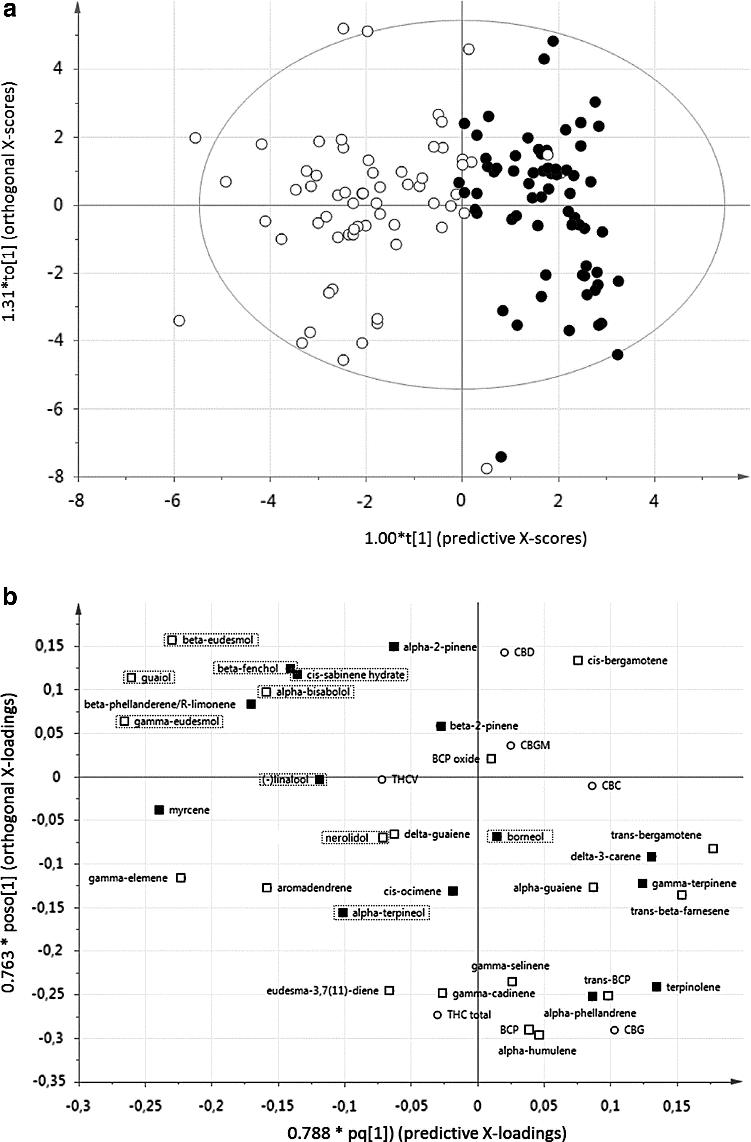What is Cannabis sativa?
Cannabis sativa, commonly known as cannabis, is a plant widely used for medicinal and recreational purposes. Cannabis plants have several different strains, with two main varieties being Cannabis sativa and Cannabis indica. Cannabis sativa is a tall, slender plant that typically grows in warm climates, while Cannabis indica is shorter and bushier, adapting to a wider range of climate conditions. These two varieties often differ in their levels of THC (Δ9-tetrahydrocannabinol) and CBD (cannabidiol), which are the two most important compounds in cannabis with medicinal value.
The metabolism of Cannabis sativa refers to the metabolic processes and products within the Cannabis sativa plant. Metabolomics is the scientific field that studies metabolic reactions within living organisms, covering all the metabolic processes and products in an organism. Metabolomics research on Cannabis sativa primarily focuses on the following aspects:
- Secondary Metabolites: Cannabis sativa plants produce various secondary metabolites, such as cannabinoids, flavonoids, and monoterpenes. Cannabinoids, particularly THC and CBD, are extensively studied because of their potential medicinal value, such as pain management, anti-inflammatory effects, and neuroprotection.
- Phenolic Acids and Flavonoids: These compounds in cannabis have antioxidant and anti-inflammatory properties. They are among the secondary metabolites in cannabis and offer health benefits.
- Monoterpene Compounds: Monoterpenes are common compounds in plants and play a crucial role in plant defense mechanisms and aroma production. Some monoterpene compounds, like beta-caryophyllene, are considered to have anti-inflammatory and analgesic properties.
- Amino Acid and Protein Metabolism: Research on the metabolism of amino acids and proteins in Cannabis sativa helps understand the physiological state of the plant under different growth conditions.
Studying the metabolism of Cannabis sativa provides deeper insights into the biological characteristics of this plant, optimizing its growth conditions, increasing the efficiency of producing specific secondary metabolites, and researching its potential medicinal value. Such research holds significance in the fields of medicine, drug development, and the cannabis industry.
Specific Cannabis sativa Analysis Projects by Creative Proteomics
Cannabinoid Profiling: Metabolomics is used to identify and quantify cannabinoids in cannabis, including major compounds like THC (Δ9-tetrahydrocannabinol) and CBD (cannabidiol). This is crucial for strain characterization, quality control, and optimizing cannabinoid production for medicinal and recreational use.
Terpene Characterization: Metabolomics analysis helps profile terpenes responsible for the unique aroma and potential therapeutic effects of cannabis strains. Understanding terpene profiles aids in strain differentiation and product development.
Secondary Metabolite Pathways: Metabolomics elucidates the complex biosynthetic pathways behind secondary metabolites, such as cannabinoids, flavonoids, and alkaloids. This knowledge guides breeding programs aiming to enhance specific metabolite profiles.
Stress Response and Environmental Adaptation: Metabolomics reveals how cannabis responds to environmental stressors, like drought, pests, and pathogens, informing strategies for crop protection and cultivation optimization.
Quality Control and Product Safety: Metabolomics monitors contaminants, including heavy metals, pesticides, and mycotoxins, ensuring compliance with safety regulations and product quality.
Plant-Pathogen Interactions: Metabolomics studies interactions between cannabis and pathogens, offering insights into plant defense mechanisms and disease management strategies.
Amino Acid and Protein Metabolism: Metabolomics deepens understanding of amino acid metabolism and protein synthesis in cannabis, contributing to knowledge of plant physiology.
Medicinal Compound Discovery: Metabolomics aids the discovery of novel bioactive compounds in cannabis, expanding its potential in pharmaceuticals and healthcare.
Strain Development: Metabolomics supports developing cannabis strains with tailored metabolite profiles for specific therapeutic or recreational purposes.
Time Series Metabolomics Study: Investigate dynamic metabolite changes at different growth stages or under various treatments, revealing metabolic pathway regulation and secondary metabolite accumulation.
Comparative Metabolomics of Different Varieties: Compare metabolomics of various cannabis varieties to identify metabolic differences from diverse genetics, aiding strain improvement and new strain development.
Optimizing Growth Conditions: Evaluate different growth conditions' impact on cannabis metabolites through metabolomics, guiding cultivation optimization.
Plant-Microbe Symbiosis Metabolomics: Use metabolomics to uncover interactions between cannabis and root-associated microbes, understanding symbiosis' metabolic influence.
Quality Control of Medicinal Cannabis Products: Employ metabolomics for consistent medicinal cannabis product quality, ensuring effectiveness and safety.
Genetic Stability Assessment: Monitor metabolic stability across different cannabis batches or cultivation cycles, revealing genetic variation extent.
Environmental Stress Response Analysis: Investigate cannabis' metabolic response to environmental stressors like drought, high temperature, or pests, shedding light on survival strategies and adaptation mechanisms.
Cannabis sativa Metabolomics Analysis Techniques
| Technique |
Instrument Model |
Main Applications |
| Liquid Chromatography-Mass Spectrometry (LC-MS/MS) |
AB Sciex TripleTOF 6600 |
Identification and quantification of cannabinoids, terpenes, flavonoids, and more. |
| Gas Chromatography-Mass Spectrometry (GC-MS) |
Agilent 7890B/5977A |
Analysis of volatile compounds, such as terpenes and phenolic compounds. |
| High-Resolution Mass Spectrometry (HRMS) |
Thermo Scientific Orbitrap series |
Accurate measurement of secondary metabolites for metabolic pathway studies. |
| Ion Mobility-Mass Spectrometry (IM-MS) |
Waters Synapt G2-Si |
Analysis of cannabinoid isomers and structural identification. |
| Nuclear Magnetic Resonance Spectroscopy (NMR) |
Bruker AVANCE III |
Structural determination of cannabinoids, terpenes, and other compounds. |
| Mass Spectrometry Imaging (MSI) |
Waters MALDI SYNAPT G2 HDMS |
Spatially resolved analysis of cannabis metabolites' distribution in tissues. |
 Workflow for Metabolomics Service
Workflow for Metabolomics Service
Sample Requirements for Cannabis sativa Metabolomics
| Sample Type |
Sample Quantity |
Storage Conditions |
Additional Notes |
| Fresh Plant Tissue |
50-100 grams |
-80°C (flash-frozen) |
Harvest at desired growth stage. Remove excess moisture before freezing. |
| Dried Plant Material |
5-10 grams |
Room temperature (dry) |
Ensure thorough drying to avoid mold or moisture contamination. |
| Extracts (e.g., Oil) |
Varies (typically mL) |
-20°C or as specified |
Store in amber glass vials to protect from light and air. |
| Soil Samples |
50-100 grams |
4°C (refrigerated) |
Avoid contamination; store in airtight containers. |
| Aqueous Extracts |
Varies (typically mL) |
-20°C or as specified |
Filter and centrifuge to remove particulates before freezing. |
| Cell Cultures |
Varies (typically mL) |
-80°C (cell pellets) |
Centrifuge cells and freeze cell pellets immediately. |
| Metabolite Standards |
As specified |
-20°C or as specified |
Store according to manufacturer recommendations. |
Case. Comprehensive Chemical Analysis and Classification of Cannabis Varieties
Background
This study aimed to comprehensively analyze and classify different cannabis varieties based on their chemical composition. The analysis focused on cannabinoids and terpenes, which play a crucial role in the diverse characteristics of cannabis.
Samples
A total of 460 cannabis accessions were collected from various sources, including coffeeshops, Bedrocan, and HempFlax. These accessions were categorized into hemp, Sativa, Indica, or hybrid types based on information from the sources.
Technological Methods
Solvents and Chemicals: The study utilized authentic standards for 44 terpenes and 6 calibrated standards for cannabinoids. These compounds were obtained from various suppliers. Analytical-grade solvents were used for the extraction and analysis.
Sample Extraction: Each cannabis sample (500 mg) was homogenized and subjected to ethanol extraction. The procedure was repeated to ensure exhaustive extraction. An internal standard (1-octanol) was added to each extract for accurate quantification.
GC Analysis: Gas Chromatography (GC) equipped with Flame Ionization Detection (FID) was used to simultaneously analyze monoterpenes, sesquiterpenes, and cannabinoids. The instrument conditions, including temperature gradients and injection parameters, were carefully controlled.
Peak Identification and Quantification: Compounds were identified based on their mass spectra and retention times, compared with authentic standards and literature reports. Quantification was achieved using calibration curves for selected compounds.
Multivariate Data Analysis: Principal Component Analysis (PCA) was used for unsupervised analysis to identify clusters of samples based on their chemical composition. Orthogonal Projection to Latent Structure-Discriminant Analysis (OPLS-DA) was employed for supervised analysis to differentiate Sativa and Indica samples.
Results
The study found significant differences in chemical composition among hemp, Sativa, and Indica cannabis varieties. Hemp had a relatively consistent chemical profile with higher CBD content, while drug-type (Sativa and Indica) cannabis exhibited greater diversity in cannabinoids and terpenes. Sativa and Indica types were distinguishable based on their terpene profiles, with hydroxylated terpenes being associated with Indica types. Surprisingly, THC and CBD content did not significantly differ between Sativa and Indica types. The study also identified missing cannabis varieties in the Dutch medicinal program, leading to the discovery of new varieties based on chemical diversity.
 (a) Unsupervised PCA score plot of all samples in our sample set. (b) PCA loading plot of all samples.
(a) Unsupervised PCA score plot of all samples in our sample set. (b) PCA loading plot of all samples.
 (a) OPLS-DA score plot discriminating Sativa-labeled (● n=68) from Indica-labeled (○; n=63) samples. (b) OPLS-DA loading plot.
(a) OPLS-DA score plot discriminating Sativa-labeled (● n=68) from Indica-labeled (○; n=63) samples. (b) OPLS-DA loading plot.
Reference
- Hazekamp, Arno, Katerina Tejkalová, and Stelios Papadimitriou. "Cannabis: from cultivar to chemovar II—a metabolomics approach to Cannabis classification." Cannabis and Cannabinoid Research 1.1 (2016): 202-215.


 Workflow for Metabolomics Service
Workflow for Metabolomics Service (a) Unsupervised PCA score plot of all samples in our sample set. (b) PCA loading plot of all samples.
(a) Unsupervised PCA score plot of all samples in our sample set. (b) PCA loading plot of all samples. (a) OPLS-DA score plot discriminating Sativa-labeled (● n=68) from Indica-labeled (○; n=63) samples. (b) OPLS-DA loading plot.
(a) OPLS-DA score plot discriminating Sativa-labeled (● n=68) from Indica-labeled (○; n=63) samples. (b) OPLS-DA loading plot.

